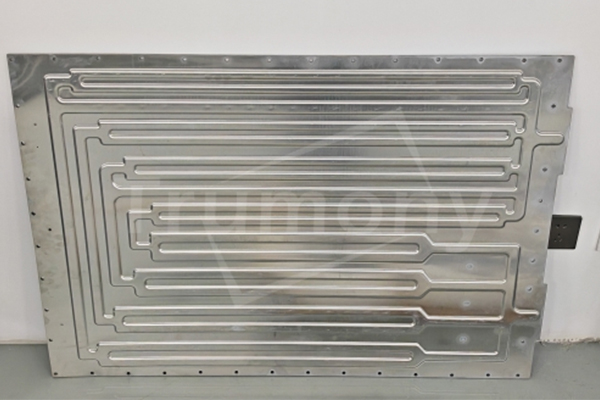The battery cold plate is a critical component in modern electric vehicles and energy storage systems, playing a key role in enhancing battery performance and extending its lifespan. As battery energy density increases and high-power output becomes more demanding, the design and efficiency of battery cold plates are receiving growing attention.
Key Functions of Battery Cold Plates
The primary function of a battery cold plate is to efficiently dissipate the heat generated by the battery during operation through heat conduction and heat convection. This helps maintain the temperature stability of battery cells. Excessive heat accumulation can degrade battery performance and even pose safety risks, making efficient heat dissipation essential for ensuring the reliability of battery systems.
Materials and Design Features
Battery cold plates are typically made from lightweight materials like aluminum, which offers excellent thermal conductivity while minimizing system weight. To enhance heat dissipation, the design often incorporates microchannel structures. These structures optimize the coolant’s flow path, ensuring uniform temperature distribution across the battery pack.
Advances in Manufacturing and Simulation
The performance of battery cold plates continues to improve, driven by advanced manufacturing processes and simulation technologies. For example, computational fluid dynamics (CFD) simulations enable precise geometric optimization, significantly boosting thermal management efficiency.
Future Trends
As the electric vehicle and renewable energy markets expand, the demand for high-performance battery cold plates is set to rise. Future designs will focus on creating efficient, lightweight, and reliable cooling solutions, propelling battery technology towards greater durability and operational efficiency.
This technological evolution underscores the importance of battery cold plates as a cornerstone of next-generation thermal management systems.

